Complete Guide to Sand Creek Massacre National Historic Site in Colorado, including things to do, history, nearby lodging and camping, directions, and so much more.
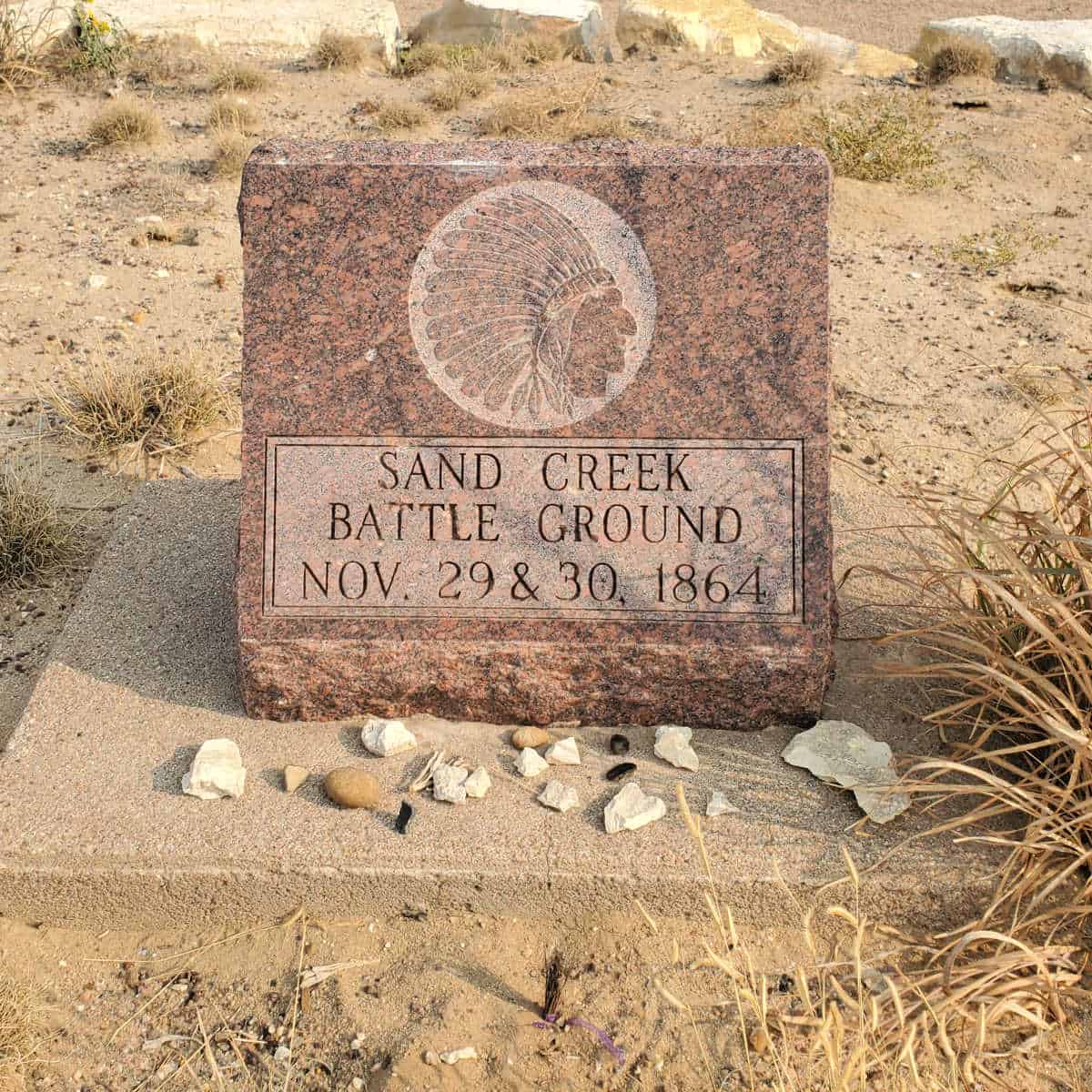
TL;DR Don’t have time to read the full article? Here are my top finds:
🏨Hotels and Vacation Rentals
📍Tours
Sand Creek Massacre National Historic Site
Sand Creek Massacre National Historic Site is located in a remote area of eastern Colorado. This site marks one of the darkest events in American History.
About Sand Creek Massacre National Historic Site
On November 29, 1864, Colonel Chivington led 675 United States Troops who slaughtered 230 Native Americans (Mostly elderly, women and children) who, just months before, surrendered to Colonel John Chivington and the federal troops of the Colorado Military District, who promised that nothing would happen to them if they surrendered.
Sand Creek Massacre National Historic Site is one of the least visited National Park sites , with only 4,772 visitors in 2022.
For those who have been, it's easy to see why, as it is off the main road and down several dirt roads for miles without any real signage.
The only thing you see for miles is fields of crops and perhaps a tractor and a farm. I would guess that many of the parks visitors are stamp collectors and attempting to see as many of the 420 national park service sites as they can get to.
For those who come to learn, find themselves starring out on the prairie wondering why this gut-wrenching event ever took place and why.
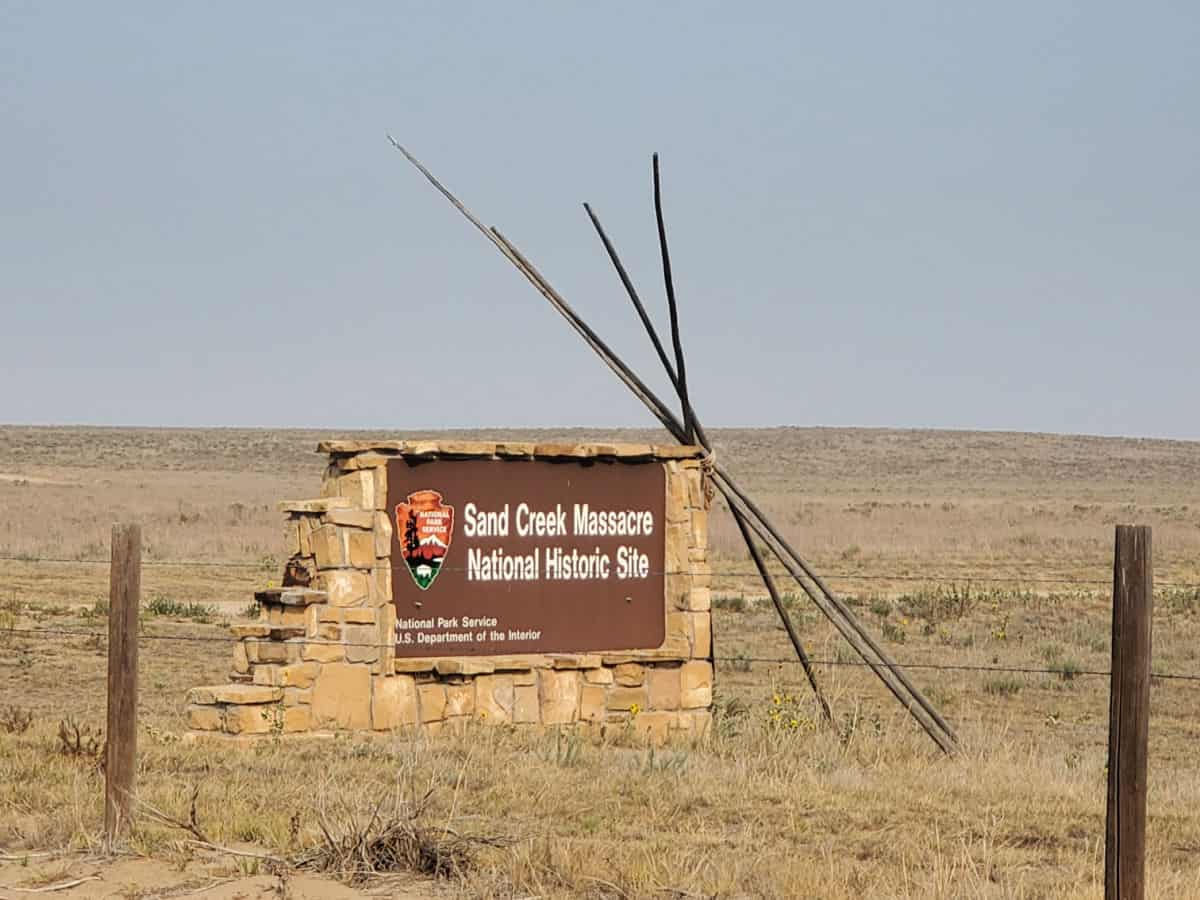
Is Sand Creek Massacre National Historic Site worth visiting?
Yes, The park provides the opportunity to learn more about an area of U.S. history that is rarely covered.
We found ourselves sitting and reflecting on what happened at the park. There is a somber feeling within the park but it is still incredibly important to visit and learn more about this event.
There are many compelling reasons to visit Sand Creek Massacre National Historic Site. First and foremost, the site offers a chance to learn about a significant and tragic event in American history that has had a profound impact on Indigenous communities.
A visit to the site provides a deeper understanding of the history of Indigenous peoples in the United States and how they have been treated by the U.S. government and military.
In addition to its historical significance, the site is located in a stunningly beautiful and serene area, surrounded by rolling hills and vast grasslands. It's an ideal spot for outdoor enthusiasts to hike, watch wildlife, and take in the scenery.
Finally, visiting Sand Creek Massacre National Historic Site is a way to pay homage to the victims of the massacre and show respect for the ongoing struggles of Indigenous peoples in the United States.
By bearing witness to the site and its history, visitors can help ensure that the memory of this tragic event is preserved for future generations and that efforts towards reconciliation and healing continue to move forward.
History of Sand Creek Massacre National Historic Site
The Sand Creek Massacre National Historic Site in Colorado is where on November 29th, 1864, over 230 Native Americans were massacred by the U.S Army. 150 of those slain were women and children. The massacre resulted from tensions between the Native American tribes from the Great Plains and the Americans.
The massacre was carried out by Colonel John M. Chivington and his army of Colorado volunteers. Chivington ordered the attack on a village along the Sand Creek River, home to over 500 Cheyenne and Arapaho tribes people, many of whom were still asleep.
The massacre took place against the backdrop of what is known as the Plains Wars or the American Indian Wars. The Plains Wars are a series of conflicts that occurred between the U.S government and the Native American tribes of the Great Plains from around 1854.
The Sand Creek Massacre National Historic Site, which opened in 2007, protects the land where the Cheyenne and Arapaho village was located.
The site also contains the place where the U.S Army first saw the village, and where the villagers kept their horses. The site preserves the route Chivington, and his men used to attack.
What Led to the Massacre?
The Cheyenne and Arapaho people had settled in the Great Plains before the 1800s. In the 1820s, traders began using the Santa Fe Trail, a path that connected Mexico with the eastern United States. The trail cut through the Great Plains.
In the 1840s, there was an increase in movement along the trade route with the discovery of gold in California. The influx of white settlers using the trail put pressure on the resources that were vital to the survival of those who called the Great Plains home.
Despite several attempts at peace between the Cheyenne and Arapaho leaders and the Americans, relations were strained and often violent.
The influx of traders making their way across the Great Plains and the construction of trading posts in the area led to the introduction of diseases.
The most common diseases were cholera and smallpox, both having devastating effects on the population of the Great Plains. A cholera outbreak in 1849 killed half of the Cheyenne population.
The discovery of gold in the late 1850s in Denver, Colorado, meant an influx of people to the area. Many settled illegally on land officially recognized as belonging to the people of the Great Plains.
The settlers took more land from the people of the Great Plains and established the territory of Colorado. The plan was to relocate the Cheyenne and Arapaho people living in the area to Arkansas. Many of the leaders refused and stayed on the land.
As Americans expanded their territory, the U.S government could take territories from the Native Americans in support of their westward expansion.
Violent clashes between the U.S Army and Native Americans increased throughout the 1860s. In Minnesota, this resulted in an uprising. In Colorado, the result was the Sand Creek Massacre.
The Sand Creek Massacre
On November 1864, as the sun began to rise over the Great Plains, Colonel John M. Chivington and his army of over 650 volunteers spotted the village where over 500 Cheyenne and Arapaho people were resting.
The Cheyenne and Arapaho people had been summoned to the area by the governor of Colorado. The Native American inhabitants of the Great Plains were instructed to make their way to the nearest Indian Agents. They were assured of their safety.
Chivington attacked the village, taking the slumbering camp by surprise. The village men grabbed whatever weapons they could find while the women, children, and elders tried to get away. To escape the assault, the native American women and children attempted to dig pits in the sand above the village to shield themselves. Chivington’s men responded by firing on the makeshift trenches with Howitzers.
For eight hours the army attacked, killing roughly 230 tribal members. The following day, the U.S volunteer soldiers returned to the scene and mutilated the bodies of the dead, killed any wounded, and burned the village.
The Aftermath of the Sand Creek Massacre
Initially, the attack was supported by the Colorado residents. Chivington and his men were praised for taking care of the hostile people who threatened Denver.
Praise for the event was short-lived. Within days, the truth about what had transpired came to light, and the atrocities committed by Chivington, and his men became known.
The public was horrified, and there was a huge public outcry. Chivington resigned from the U.S Army, as did the volunteers. The massacre led to policies to enforce more humane treatment of the Native American people after the Civil War.
The site of the Sand Creek Massacre has been preserved by the National Parks Service and is an open landscape. Much of the park is sacred ground.
Please respect this land that is important to tribal communities.
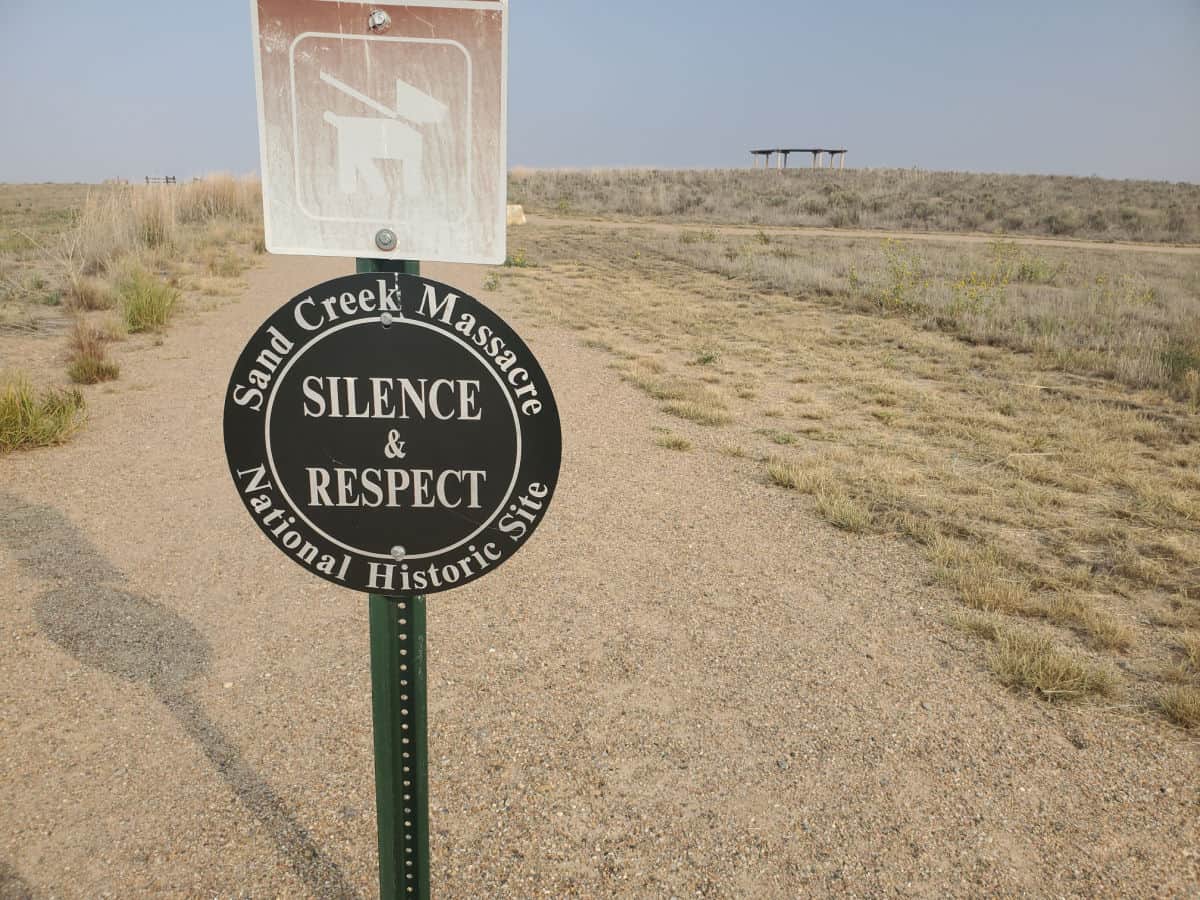
Things to know before your visit to Sand Creek Massacre National Historic Site
Entrance fee
$0.00 - There is no entrance fee to visit the park.
Learn more about National Park Passes for parks that have an entrance fee.
$80.00 - For the America the Beautiful/National Park Pass. The pass covers entrance fees to all US National Park Sites and over 2,000 Federal Recreation Fee Sites for an entire year and covers everyone in the car for per-vehicle sites and up to 4 adults for per-person sites.

Buy your pass at this link, and REI will donate 10% of pass proceeds to the National Forest Foundation, National Park Foundation, and the U.S. Endowment for Forestry & Communities.
National Park Free Entrance Days -Mark your calendars with the five free entrance days the National Park Service offers annually.
Time Zone
Mountain Time Zone
Pets
Leashed pets are allowed on trails, but not in the park buildings.
Cell Service
We had enough cell service to bring up the GPS and get directions to Bent’s Old Fort NHS the next park on our tour.
Park Hours
The park is located in Mountain Daylight Time (MDT). Be aware that the time changes to Central Daylight Time (CDT) in Kansas.
Wi-Fi
There is no public WiFi available at the park.
Insect Repellent
Insect repellent is always a great idea when outdoors, especially if you are around any body of water.
We use Permethrin Spray on our clothes before our park trips.
Water Bottle
Make sure to bring your own water bottle and plenty of water with you. Plastic water bottles are not sold in the park.
Parking
There is a large parking area near the visitor center and at the overlook.
Food/Restaurants
There are no restaurants in the park.
Gas
There are no gas stations within the park.
Drones
Drones are not permitted within National Park Sites.
National Park Passport Stamps
National Park Passport stamps can be found in the visitor center.
Sand Creek Massacre NHS is part of the 2017 Passport Stamp Set.
We like to use these circle stickers for park stamps so we don't have to bring our passport book with us on every trip.
The National Park Passport Book program is a great way to document all of the parks you have visitied.
You can get Passport Stickers and Annual Stamp Sets to help enhance your Passport Book.
Electric Vehicle Charging
There are no electric vehicle charging stations in Eads, Colorado.
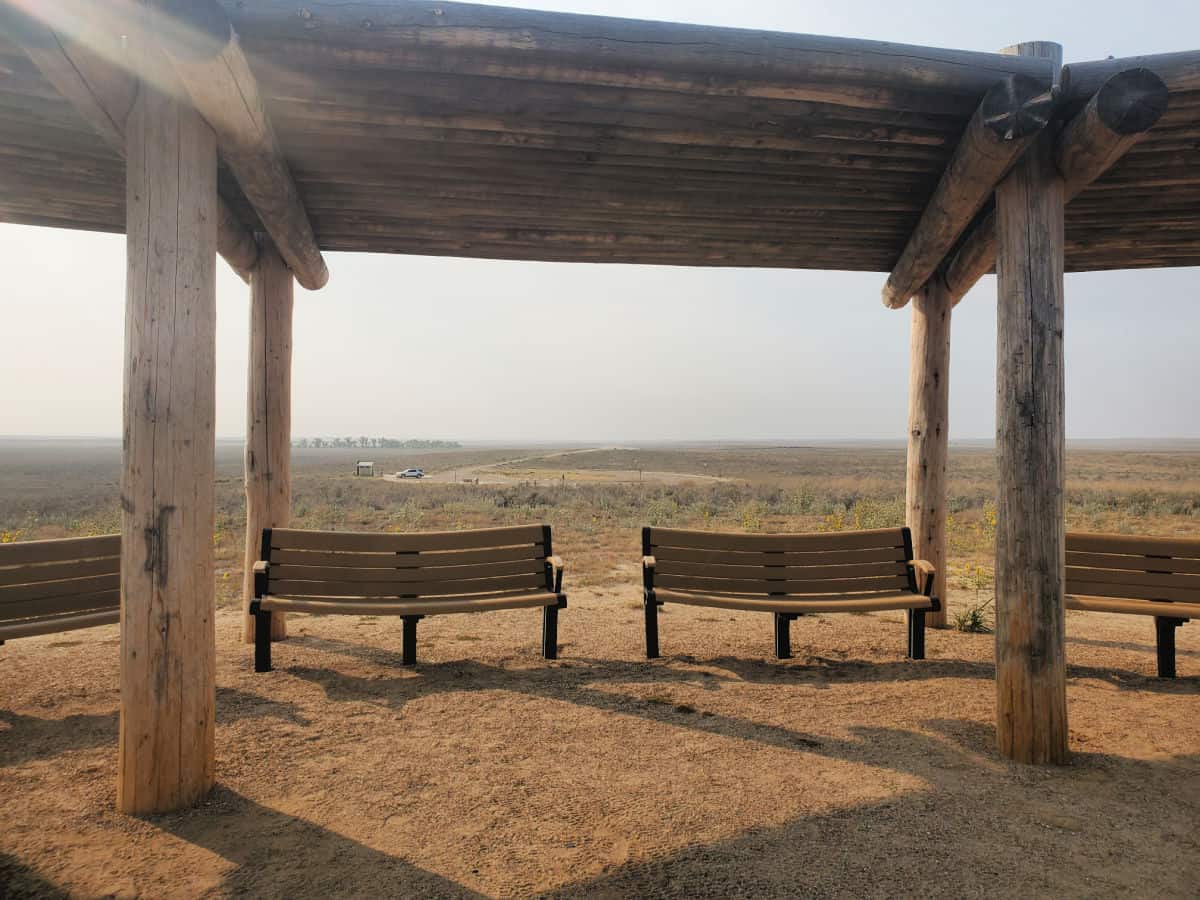
Details about Sand Creek Massacre National Historic Site
Size - 3,025 acres
Interior Secretary Deb Haaland and National Park Service (NPS) Director Chuck Sams announced on October 5, 2022 an additional 3,478 acres of land were added to the park.
The additional federal land will allow NPS to increase public opportunities to experience and interpret the site’s stories and history.
In addition, the expansion of the historic site will contribute to one of the most intact shortgrass prairie ecosystems within the National Park system, providing habitat for a wide range of plants, wildlife and species of special concern.
The Conservation Fund was critical to facilitating the acquisition from a willing seller, with financial support from Great Outdoors Colorado and the National Park Foundation.
“These new parcels include lands listed on the National Register of Historic Places for their significance to the devastating events of November 29, 1864. These lands also have significant archaeological remains of the massacre, including evidence of the village where Cheyenne and Arapaho families were camped, and an intact viewshed that is key to the historical integrity of the National Historic Site.” Janet Frederick, Sand Creek Massacre National Historic Site Superintendent.
The leaders participated in an event with tribal leaders from the Northern Arapaho Tribe, the Northern Cheyenne Tribe, the Cheyenne and Arapaho Tribes, Senators Michael Bennet and John Hickenlooper, Lieutenant Governor Dianne Primavera, and other community partners including The Conservation Fund, Great Outdoors Colorado and the National Park Foundation.
(Information from NPS Press release)
Check out how the park compares to other National Parks by Size.
Date Established
Congress designated Sand Creek Massacre as a national historic site in 2000, and the site was dedicated and formally opened to the public on April 27, 2007.
Visitation
In 2022, Sand Creek Massacre NHS had 4,772 park visitors.
In 2021, Sand Creek Massacre NHS had 6,201 park visitors.
In 2020, Sand Creek Massacre NHS had 4,215 park visitors.
In 2019, Sand Creek Massacre NHS had 5,701 park visitors.
Learn more about the most visited and least visited National Parks in the US
National Park Address
1301 Maine Street
Eads, CO 81036
National Park Map
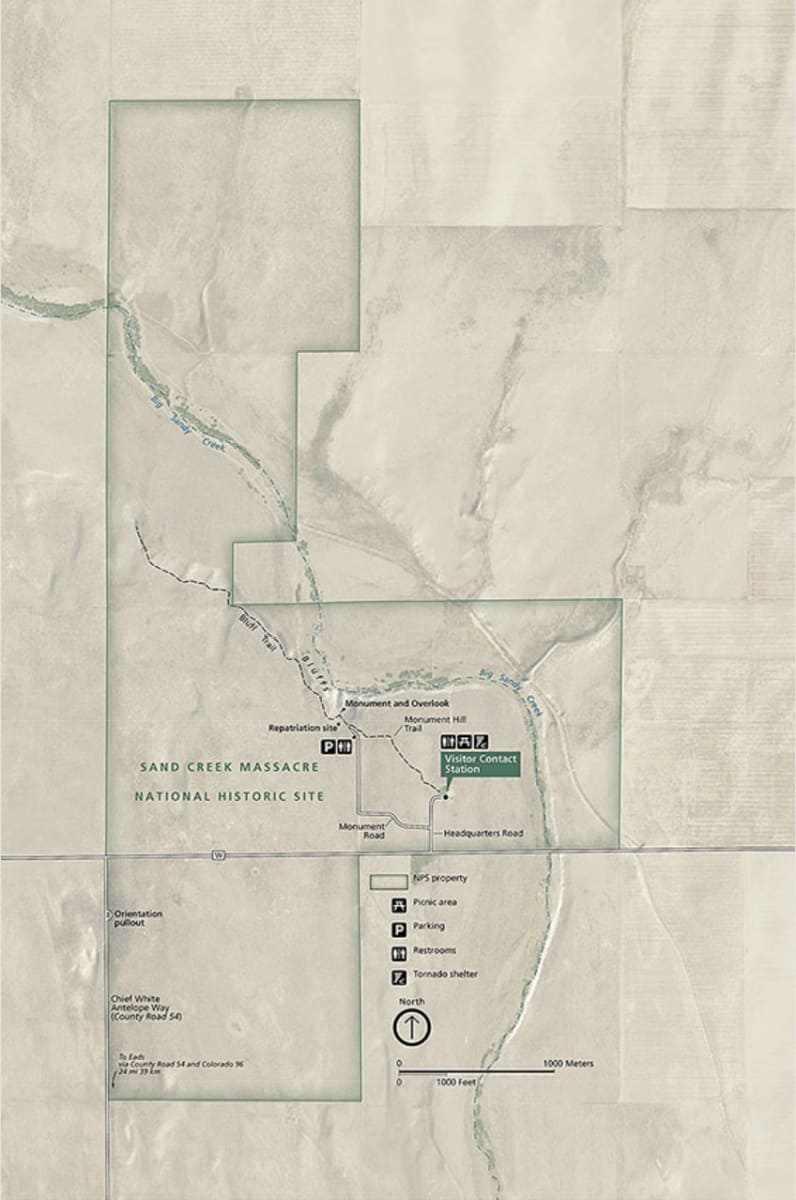
Where is Sand Creek Massacre National Historic Site?
Sand Creek Massacre NHS is located approximately 23 miles east of Eads, Colorado.
Located in southeastern Colorado.
Estimated distance from major cities nearby
- Colorado Springs, CO - 143 miles
- Aurora, CO - 173 miles
- Denver, CO - 178 miles
- Wichita, KS - 326 miles
- Albuquerque, NM - 425 miles
- Lubbock, TX - 379 miles
- Oklahoma City, OK - 439 miles
- Lincoln, NE - 420 miles
- Tulsa, OK - 500 miles
- Omaha, NE - 475 miles
Estimated Distance from nearby National Park
Great Sand Dunes National Park - 235 miles
Rocky Mountain National Park - 241 miles
Black Canyon of the Gunnison National Park - 353 miles
Mesa Verde National Park - 417 miles
Petrified Forest National Park - 671 miles
Canyonlands National Park - 542 miles
Where is the National Park Visitor Center?
The park Visitor Contact Station is located at the historic site, which is eight miles north of the town of Chivington.
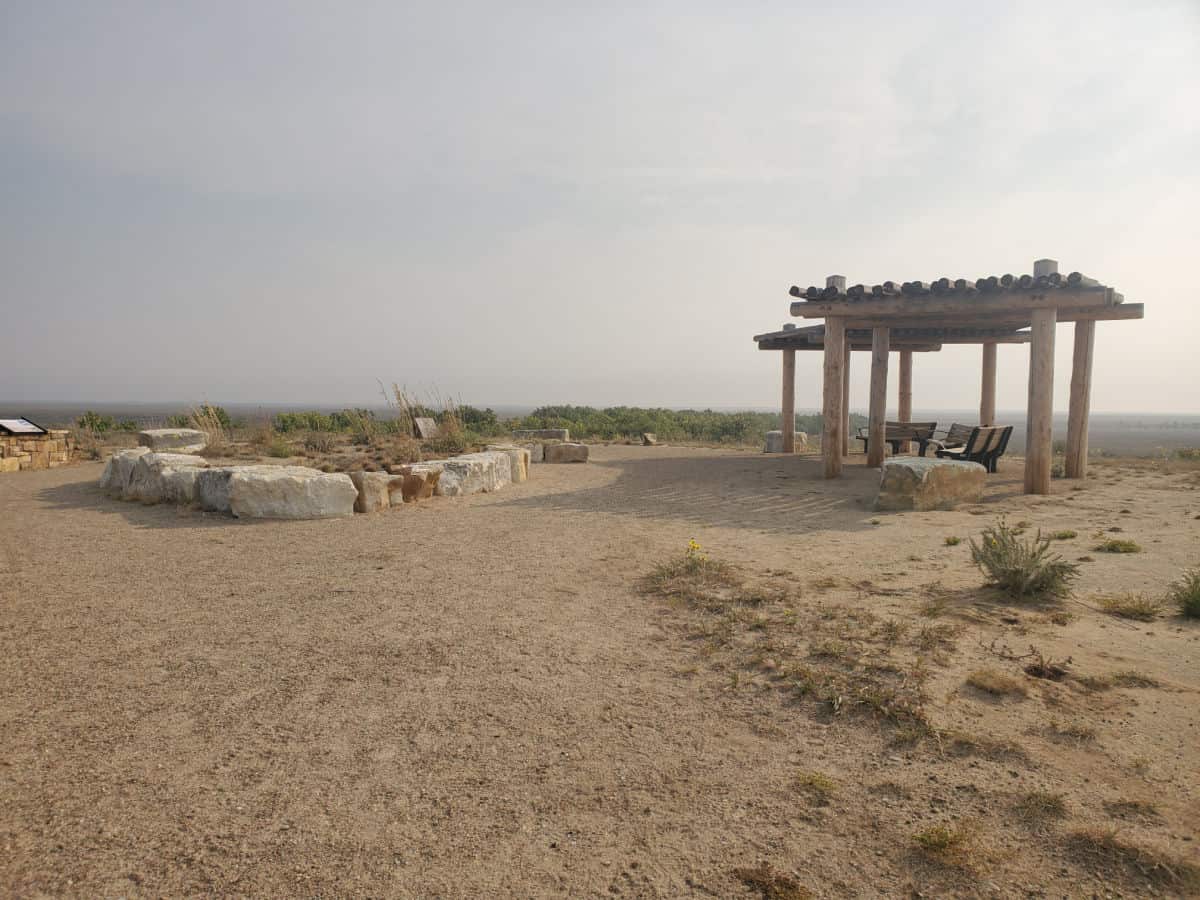
Getting to Sand Creek Massacre National Historic Site
Closest Airports
- Pueblo Memorial Airport (PUB / KPUB)
International Airports
- Denver International Airport (DEN / KDEN)
Regional Airports
- Southeast Colorado Regional Airport (LAA / KLAA)
Driving Directions
You will need to drive on dirt county roads to reach the park. Don’t be surprised when your GPS tells you to pull onto a dirt road.
- From the town of Eads take Hwy. 287 South / 96 East for 2.7 miles.
- Turn left onto Hwy. 96 East for 11 miles, continue through the town of Chivington.
- ½ mile after Chivington, turn left, North, onto Chief White Antelope Way, County Road 54, for 7 miles.
- Turn right, East, onto County Road W. (cr w) for 1.3 miles.
- The entrance to the site is on your left. Parking is available across from the picnic area.
You will need to drive on dirt county roads to reach the park. Don’t be surprised when your GPS tells you to pull onto a dirt road.
The Sand Creek Massacre Site park entrance is marked with brown National Park Service signs.
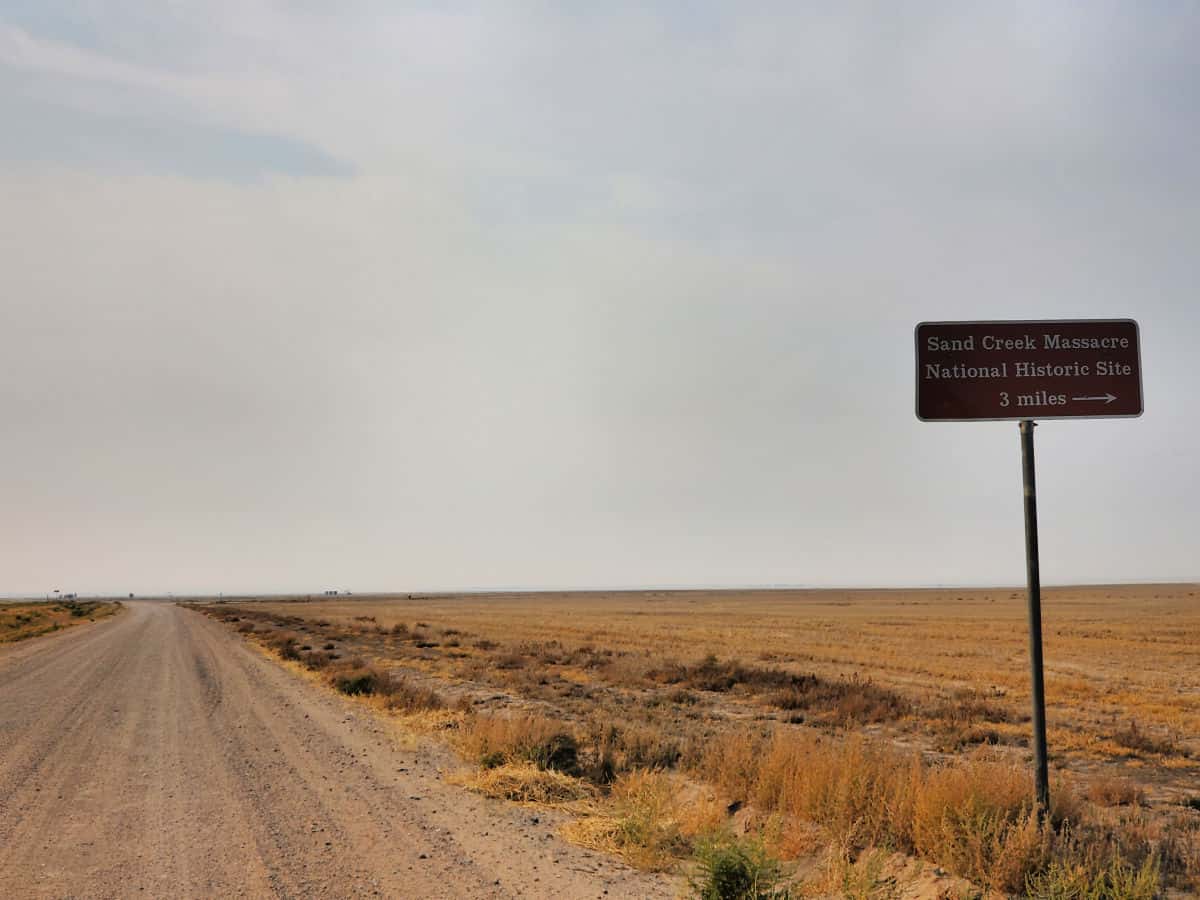
Best time to visit Sand Creek Massacre National Historic Site
The best time to visit Sand Creek Massacre National Historic Site is during the summer months from May to September when the weather is mild and the site's visitor center and facilities are open.
Additionally, visitors can attend interpretive programs and ranger-led tours during this time, which provide a deeper understanding of the site's history and significance.
However, it's important to note that temperatures can be quite hot during the day, so visitors should come prepared with plenty of water and sunscreen.
Weather and Seasons
The hot season occurs from June 3rd to September 16th, with an average daily high temperature above 81 degrees.
The cold season occurs from November 23rd to February 23rd, with an average daily high temperature below 51 degrees.
The coldest month occurs January, with an average low of 18 degrees and high of 43 degrees.
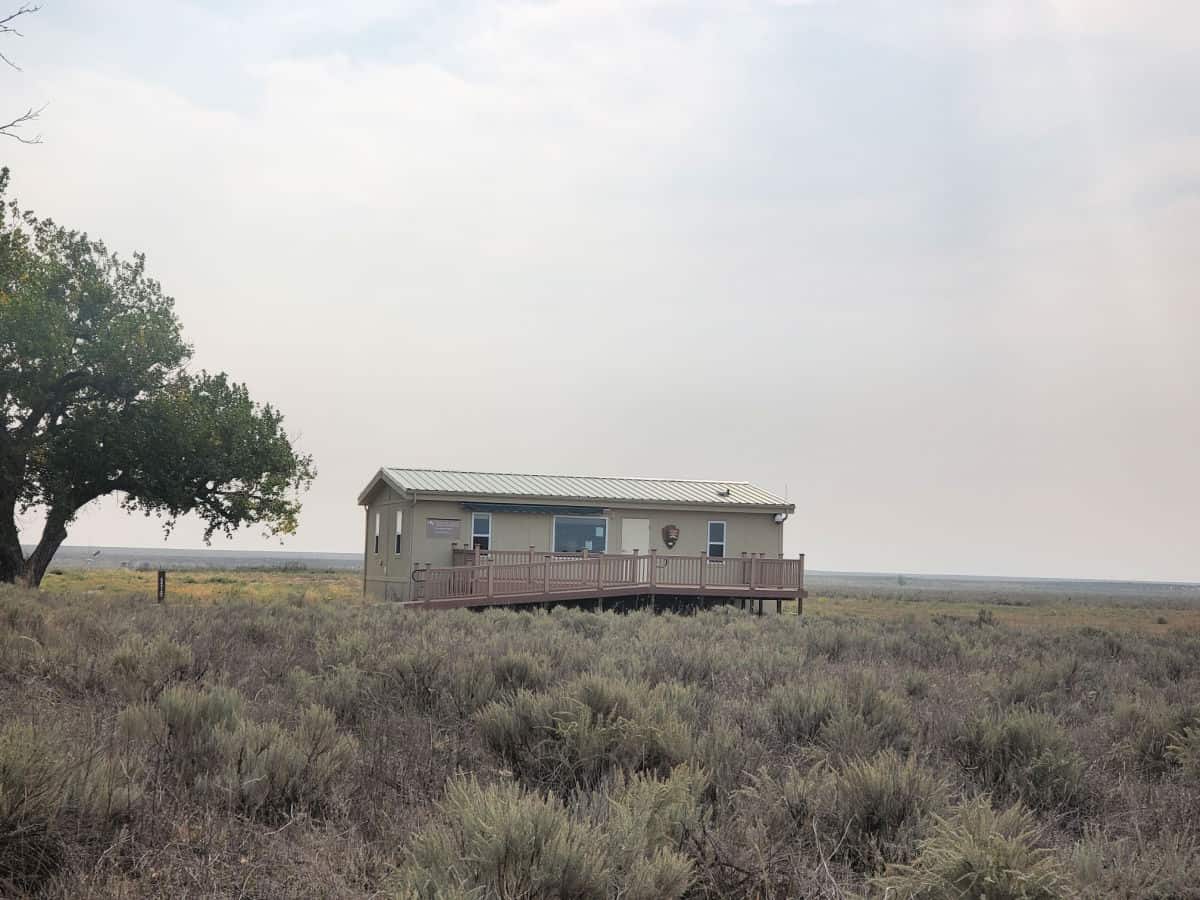
Best Things to do in Sand Creek Massacre National Historic Site
Pay Respect, Honor, and Reflect
I think that these sites are vital to preserve. They tell a story, a story that sometimes shows that American History is not all glory.
I personally had an extremely heavy feeling in this park. I want to share my feelings so you can prepare yourself for what you are coming to visit. This park is not your go have fun and go for a hike and see epic wildlife and scenery like a designated National Park would have.
I sat on the park bench (in the photo above) and just took the time to reflect upon what I had seen and learned.
I can still close my eyes and place myself on that bench. I can still feel the cool breeze coming off the great plains and crossing my face blowing my hair to one side. The air had the cold crisp bite of early fall and its reminder that winter is coming.
It was eerily quiet besides the breeze as I looked down upon the site where the Native Americans would have been amongst the trees tucked behind the bluff and next to Big Sandy Creek.
I sat on the bench and couldn't even imagine the shock and horror as they were ambushed by the same person who promised they would be safe literally a few months prior.
Just then, the breeze picked up and I had chills all up and down my spine. I cannot describe how I felt but have had that feeling before when I visited Arlington Cemetary and a few of the Civil War Battlegrounds.
It is not a feeling of peace, instead one of unsettlement. I got off the bench and walked up to my wife. We decided it was time to leave and go visit the next park that we had on our agenda, Bent's Old Fort National Historic Site.
I remember us leaving the park. We were both dead quiet, both thinking about where we just left. I left the park with even more questions than what I had originally come in with.
The silence was finally broken when we arrived in the town of Chivington, not too far from the park. I think we were both shocked as to why the name of the town was after someone who we just learned slaughtered 230 innocent Native Americans. We again sat in silence for quite so time just digesting all this information.
Visitor Center
The Visitor Center offers visitors a chance to learn about the tragic events that occurred on November 29, 1864.
The center features exhibits, multimedia presentations, and artifacts that provide insight into the lives of the Cheyenne and Arapaho people who were attacked by the U.S. Army.
Visitors can watch a 12-minute film that tells the story of the massacre and its aftermath, view historical documents and photographs, and participate in interactive exhibits.
Junior Ranger Program
The Junior Ranger booklet can be picked up at the Visitor and Education Center in Eads, or at the Ranger Contact Station at the site.
Ranger Program
Ranger Programs are offered at 10:00 am and 2:00 pm. Here you will have the opportunity to learn about this park from an Interpretative Ranger.
Drive up to the Monument and Overlook
If you are in a hurry or not prepared to go for a walk, then simply turn on Monument Road off of Headquarters Road that takes you into the park.
It is a short uphill walk from the parking lot up to the top of the monument. At the top, there are multiple benches under the shade that are perfect for sitting and reflecting on what happened here.
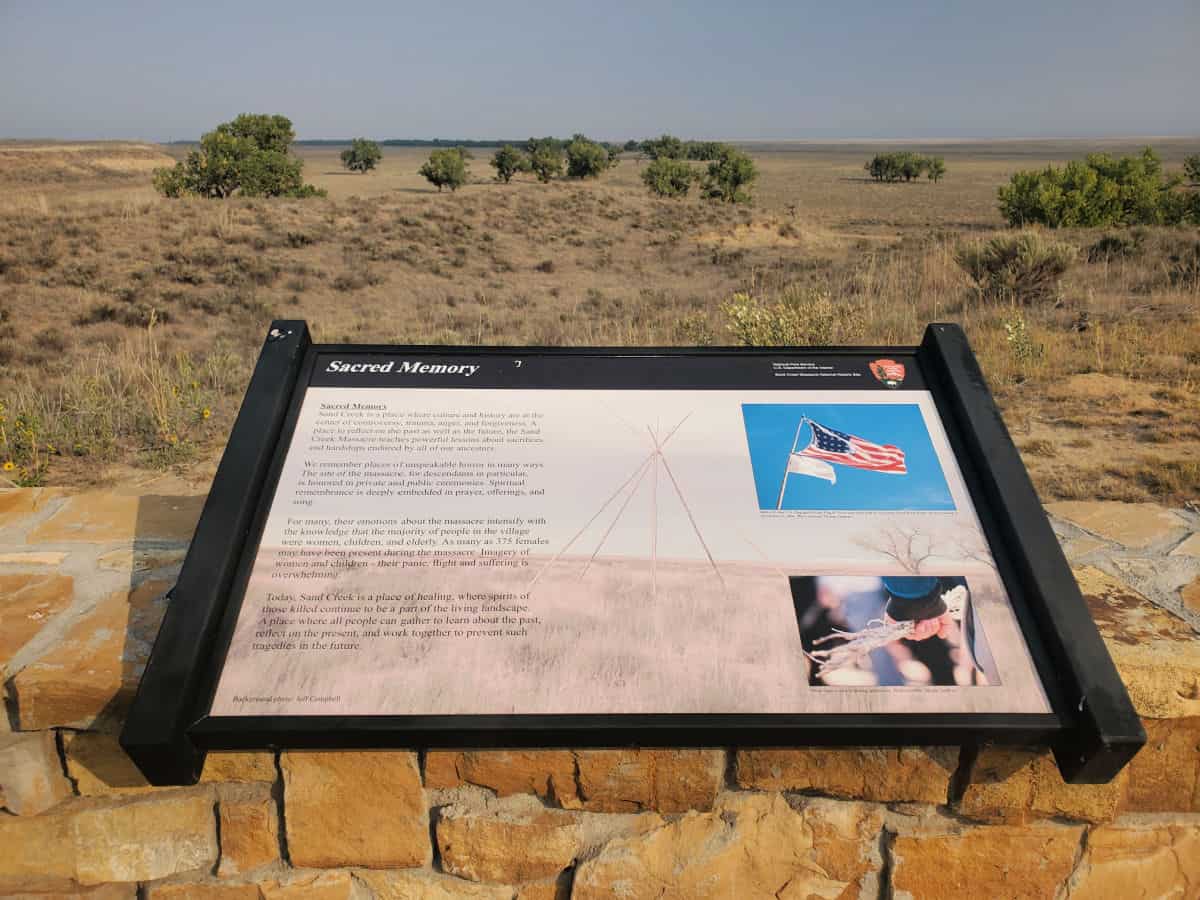
Hiking in Sand Creek Massacre National Historic Site
Always carry the 10 essentials for outdoor survival when exploring.
The Monument Hill Trail starts at the picnic area next to the park's visitor center and works its way up to the Monument and Overlook.
Here you can return to the picnic area or continue on the Bluff Trail. Both trails have several interpretative panels giving hikers a better understanding of what happened here on November 29, 1864.
How to beat the crowds?
We did not see any other visitors during our visit to the park.
Where to stay when visiting
There are no National Park Lodges within the park.
Nearby Lodging includes:
Cobblestone Hotel & Suites - Lamar - take advantage of free self-serve breakfast, a grocery/convenience store, and laundry facilities. Stay connected with free in-room Wi-Fi.
Days Inn by Wyndham Lamar - take advantage of free to-go breakfast, laundry facilities, and a gym. For some rest and relaxation, visit the hot tub. Free in-room Wi-Fi and a business center are available to all guests.
Holiday Inn Express Hotel & Suites -Take advantage of a free breakfast buffet, dry cleaning/laundry services, and a gym at Holiday Inn Express Hotel & Suites LAMAR, an IHG Hotel. Guests can connect to free in-room Wi-Fi.
Click on the map below to see current vacation rentals and lodges near the park.
Camping
There are no National Park Campgrounds within the park.
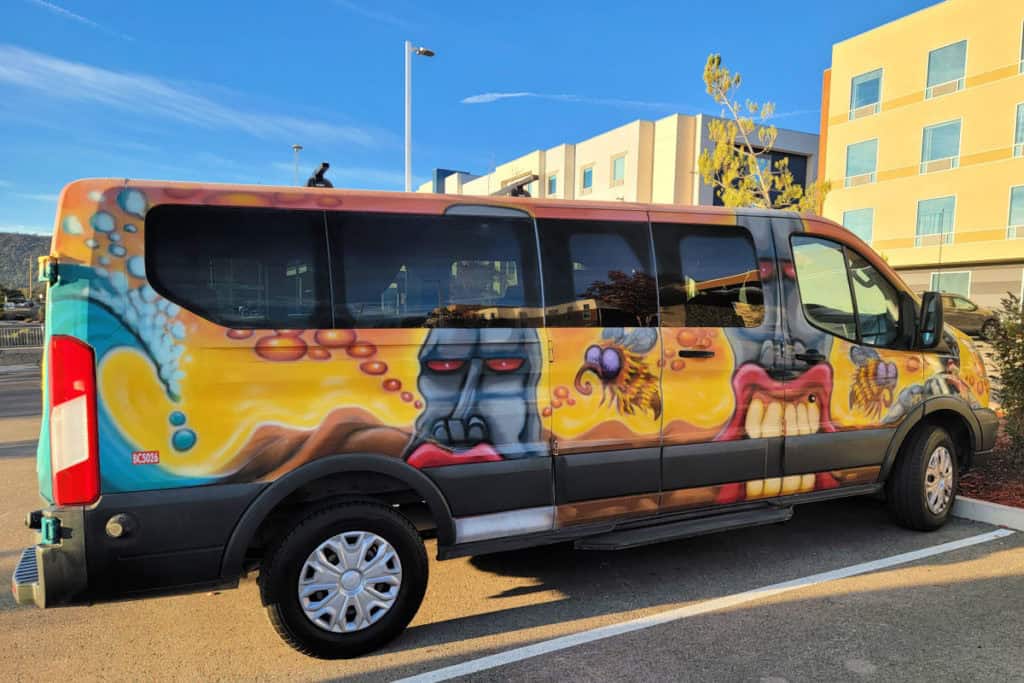
For a fun adventure check out Escape Campervans. These campervans have built in beds, kitchen area with refrigerators, and more. You can have them fully set up with kitchen supplies, bedding, and other fun extras. They are painted with epic designs you can't miss!
Escape Campervans has offices in Vancouver, Seattle, Portland, San Francisco, Las Vegas, Los Angeles, Phoenix, Salt Lake City, Denver, New York, and Orlando
Travel Tips
This is a somber park with a dark history. Please be respectful while visiting the park.
Make sure you have water with you. There is no real shade on the hike up to the monument. If you are visiting in the summer it will be HOT!
Be prepared the interpretive panels are a must-read but they are gut-wrenching. Be prepared especially if you have kids with you that the events of the Sand Creek Massacre were not PG.
We were told by a Park Ranger that a few of the interpretive panels near the visitor center that have letters on them are particularly hard to read.
Time needed – 30 minutes to 2 hours depending on if you take in a ranger program, hike the trail instead of driving up to the monument.
Restrooms – There are restrooms near the monument and also near the visitor center
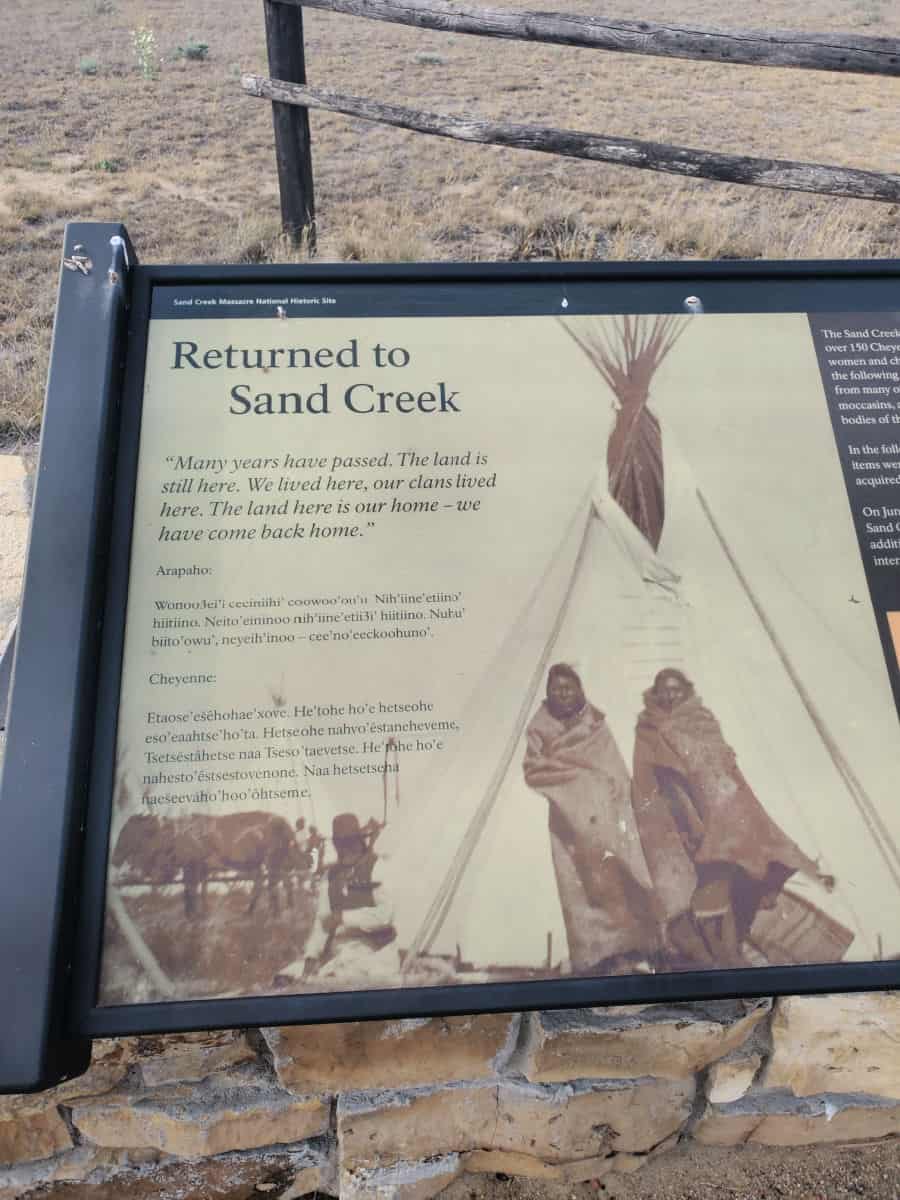
Parks Near Sand Creek Massacre National Historic Site
Bent's Old Fort National Historic Site
Florissant Fossil Beds National Monument
Nicodemus National Historic Site
Fort Larned National Historic Site
Amache National Historic Site
Capulin Volcano National Monument
Check out all of the National Parks in Colorado along with neighboring National Parks in Arizona, National Parks in Kansas, Nebraska National Parks, New Mexico National Park, National Parks in Oklahoma, National Parks in Utah, and Wyoming National Parks.
Make sure to follow Park Ranger John on Facebook, Instagram, Pinterest, and TikTok

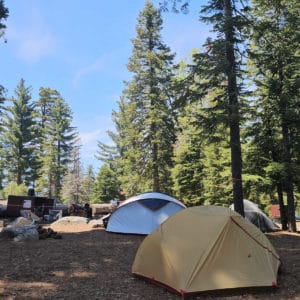
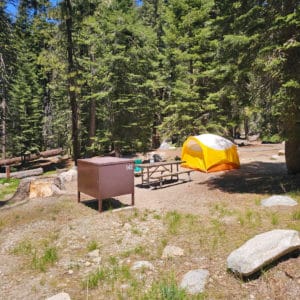
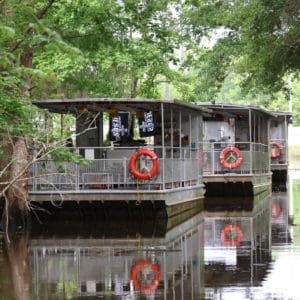
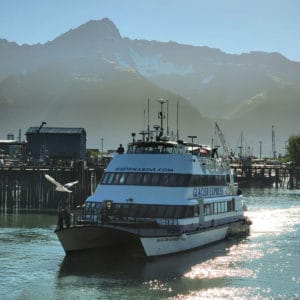
Leave a Reply